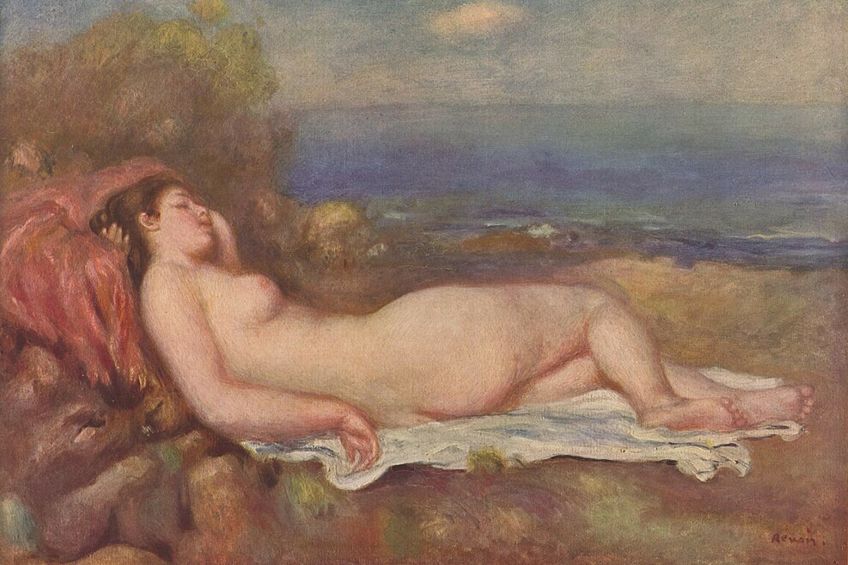Art Styles – Tracing the Progression Throughout History
What is an art style, and what is the difference between an art movement and an art style? Numerous art styles have emerged over the centuries in art history that have provided us with some of the most iconic aesthetics and artworks to date. In this article, we will introduce you to all the art styles that you can think of as defined by their chronological periods. Keep reading for more about the characteristics of each art style, as well as what makes these art styles so unique! Hopefully, by the end of this article, you can come up with innovative ways to combine a few different types of styles in art and produce your own unique style!
An Introduction to Art Styles: Tracing the Roots of Contemporary Art
The contemporary art you see today has its roots in numerous art styles that have evolved. While you may be familiar with popular art styles such as Baroque painting and Romantic art, there are lots of other art styles that you probably have not heard of. Before we dive into the comprehensive list of art styles in art history, it is useful to get an idea of the definition of an art style and the way that it differs from the term “art movement”.
 Death and Life (1910) by Gustav Klimt; Gustav Klimt, Public domain, via Wikimedia Commons
Death and Life (1910) by Gustav Klimt; Gustav Klimt, Public domain, via Wikimedia Commons
What Is an Art Style?
When forming a definition of art style, it is useful to think of the art style as a particular way of producing art, which contains a distinct visual language. This distinct visual language is made up of a specific subject matter, theme, or form and is used by the artist of a particular period to produce a specific aesthetic visual effect. In this way, art styles can be defined by their unique characteristics outlined by an artwork’s composition, subject, use of line, color, and other art elements in different combinations that reflect the desired aesthetic.
Understanding the different art styles in art history is important since each art style reflects the social, political, and cultural context of the time in which it emerged.
Ultimately, art styles help historians understand the context of the time as well as the inspiration behind the emergence of particular art styles. Before we dive into the different art styles that helped shape art history, we will outline the difference between an art style and an art movement to help you distinguish between the two since many art styles are also defined by the movement in which they were formed.
Art Style vs. Art Movement
Identifying the difference between an art style and a movement includes a consideration of a few factors. While both terms are used frequently in art history, they are both used in different circumstances. Art styles, as discussed in this article, refer to a set of visual characteristics or techniques used by a collective or individual artist. Art movements refer solely to a group of artists who share the same approach, philosophy, or art style and who create artworks that share a particular vision. This vision can include a preferred art style backed up by a philosophy towards the context and time. The first distinction is thus made between a recognition of the individual and collective, where art styles are primarily used by artists who have developed unique visual languages and can be credited with “pioneering” an art style.

The context or period can also influence the definition of an art style since art styles can be reused across time or last for decades and centuries, while art movements are defined by their development in a specific and shorter time frame. To understand the latter, art movements tend to develop as a response to the dominant art style of the period and can last from a few weeks to a few years. Art styles may emerge under art movements; however, variations may occur among individual artists who help evolve the art style.
While art movements are understood in terms of their short-lived and collective qualities, another great way to identify an art style from a movement is to recognize that art styles are very specific and encompass a range of formal art qualities, including a focus on elements such as line, color, and composition. Art movements on the other hand are broadly focused on the social, philosophical, and political aims of the collective, and as such, a range of art styles may emerge from a movement. The influence of the art style is also centered on individuals who may pick up the art style from time to time across history while art movements tend to hold a wider influence over generations of artists.
Therefore, the distinction between an art style and an art movement is clearer when viewed for its specific qualities encompassing influence, duration, and presence or absence of formal visual characteristics, philosophies, and groupings.
Exploring the Different Types of Art Styles in History
Now that you understand the differences between an art style and an art movement, it will be easy to recognize that numerous types of styles in art have developed since prehistory! Outlining the specific art styles of early humans may be challenging since the perception of artwork and its specific styles were relational to the context of production and culture that produced the artwork. However, below we have compiled a list of the oldest and newest art styles of art history that will have you intrigued and excited! Every artist seeks to stand out using the power of a unique art style. Perhaps, you will be inspired by a few of these older artwork types and create your own!

Figurative (45.5 KYA – Present)
| Active Between | c. 45.5 kya – Present |
| Famous Artists | ● Leonardo di ser Piero da Vinci (1452 – 1519) ● Magdalena Carmen Frida Kahlo y Calderón (1907 – 1954) ● Edgar Degas (1834 – 1917) |
The figurative art style is defined by the representation of objects from the real world and is closely connected to naturalism and realism. The figurative art style encompasses the idea of representation itself and is the oldest art style to date. One of the oldest styles was championed around 45.5 thousand years ago by an unknown artist who painted an image of a pig in an Indonesian cave. Figurative styles are quite broad and have been executed with many other art styles to represent subjects from reality that are recognizable by their shape and form.
Another term for figurative art is representational art with the most common subject in art history being the human figure.

Geometric (900 BCE – Present)
| Active Between | c. 900 BCE – Present |
| Famous Artists | ● Josef Albers (1888 – 1976) ● Frank Philip Stella (1936 – Present) ● Fanny Sanín Sader (1938 – Present) |
The Geometric art style is among the oldest types of styles in art, which originated in ancient Greece around 900 BCE. Geometric art was classified as a Mycenaean-Greek art form that was practiced before the introduction of foreign influences and is thus considered to be one of the pure art forms of the Greek civilization. The style incorporates the use of geometry and regular shapes and is also referred to as geometric abstraction. Geometric art features geometric designs that may serve specific symbolic meanings and are often used in tandem with representing non-objective compositions.
It is believed that geometric art is also useful in helping artists express their emotions due to the rigid yet sharp qualities of geometric shapes that express a sense of agitation as opposed to curved shapes that express calmness.
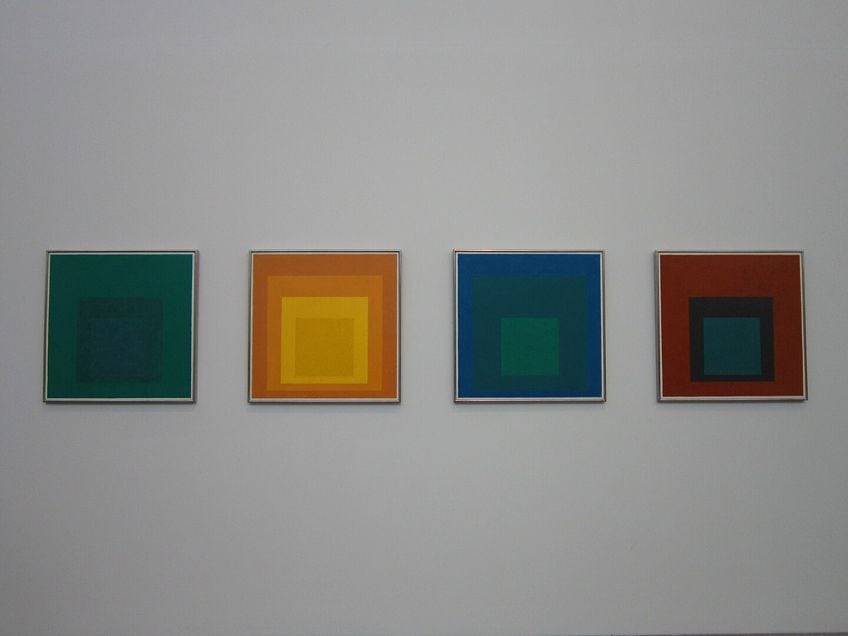
Classical (490 – 323 BCE)
| Active Between | c. 490 – 323 BCE |
| Famous Artists | ● Praxiteles of Athens (395 – 330 BCE) ● Polykleitos (480 – 420 BCE) ● Apollodorus Skiagraphos (c. 5th Century BCE) |
The Classical art style was inspired by the artistic preferences that flourished between the 5th and 4th centuries BCE in ancient Greece and Rome. This style is considered to be among the most influential art styles, which is admired across centuries. Classical art is characterized by its use of idealized forms created using symmetry, geometric shapes, and balance to portray classical subjects such as historical scenes, mythological scenes, and other famous narratives of ancient Greece. The Classical style had also been developed by the Romans who admired the artistic tenets of Greece and looked towards the Greeks for their cultural and intellectual advancements.
Western art history adopted the classical style over the next few centuries and adapted it into different styles recognized by Neoclassicism and other works by famous Renaissance artists.

Byzantine (c. 330 CE – 1453)
| Active Between | c. 330 CE – 1453 |
| Famous Artists | ● Duccio di Buoninsegna (c. 13th century – 1319) ● Doge Pietro Orseolo (961 – 1009) ● Theodore Apsevdis (1150 – 1215) |
The Byzantine style of art was defined by the artistic preferences of the Eastern Roman Empire, which lasted from 330 CE until 1453. The Byzantine style is one of the most popular Medieval styles of art that emerged from the new Roman capital of Constantinople (present-day Turkey) and pioneered the rejection of Classical Roman art and realistic representation. The Byzantine art style was characterized by flattened designs, highly stylized images, gold backgrounds, elongated figures, angular facial features, and religious iconography. This art style is considered unique to other styles since its focus was on the depiction of subjects that were unseen and differed from the real world.
Subjects such as heaven and the spiritual world were at the forefront of the ornate works of the Byzantine, which thrived between 527 and 565 CE under the reign of Emperor Justinian.

Romanesque (1000 CE – 12th Century)
| Active Between | c. 1000 CE – 12th century |
| Famous Artists | ● Master Hugo (active c. 1130 – 1150) ● Berlinghiero Berlinghieri (active c. 1228 – 1236) ● Master Mateo (c. 1150 – 1200/1217) |
The Romanesque style was a popular style before the Gothic style that was made up of a combination of Roman and Byzantine elements fused with local traditions. The style of Romanesque art was also identified as the Lombard style or the Norman style due to variations in England and Lombardy. The period of Romanesque-style art and architecture lasted between 1000 CE and the 12th century and was characterized by expressive human figures and fortress-like architecture with round arches and thick walls. The art focused primarily on the depiction of biblical subjects and was instigated in Britain by William the Conqueror. Artwork types such as the Romanesque style was also known as the first unified art style of Western Christianity, connected to the Abbey of Cluny and the Cistercian religious order.
The style was also characterized by its increased use of ornament and decorative arcades, which were popular throughout the Middle Ages.
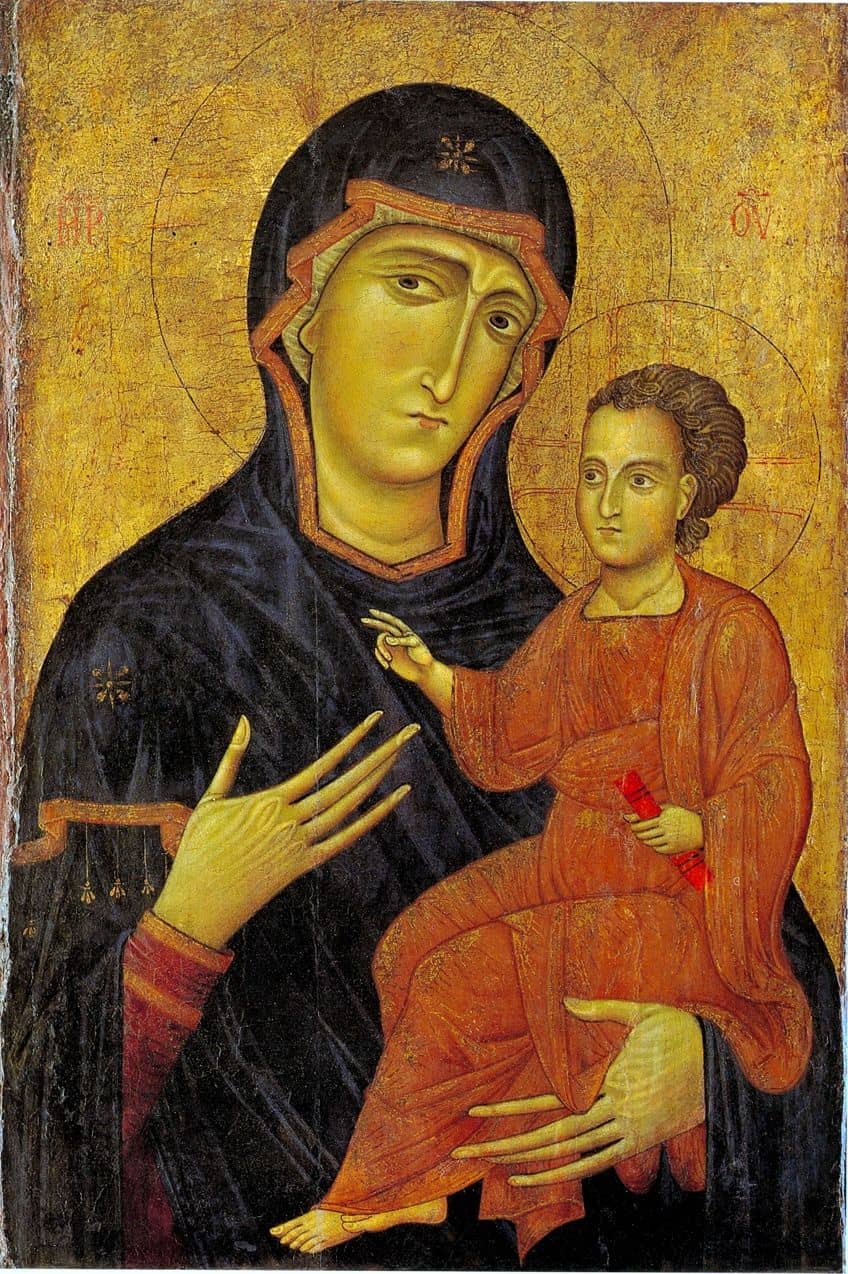
Gothic (12th – 16th Century)
| Active Between | c. 12th – 16th centuries |
| Famous Artists | ● Mastro Guglielmo (c. 1159 – 1162) ● Lorenzo Maitani (c. 1275 – 1330) ● Puccio Capanna (active c. 1338 – 1348) |
The Gothic art style was one of the most well-known styles of art from the Medieval period in Europe and a derivative of the Romanesque style that was popular between the 12th and the 16th centuries. The Gothic style was first used in religious architecture and was designed for use in cathedrals and churches, which resulted in many spacious buildings decorated with ornate stone sculptures and relief artworks. The Gothic art style is defined by intricate stone carvings, and the presence of strong contrasts, and initially included the use of Christian themes. This style influenced many art forms, including sculpture, the decorative arts, and painting. Painting in the Gothic style featured intricate details while sculpture utilized materials such as stone and wood with an emphasis on detailed emotional expression. Artwork types such as the Gothic style continue to influence the field of architecture and design. The 19th century also saw the revival of the style and became a popular choice for many designers and architects.
In literature and film, the Gothic style was adapted for the romanticization of its darker features characterized by fine details, dramatic monochrome contrasts, and the use of symbolism.

Ukiyo-e (1620 – 1912)
| Active Between | c. 1620 – 1912 |
| Famous Artists | ● Katsushika Hokusai (1760 – 1849) ● Utagawa Hiroshige (also known as Andō Tokutarō) (1797 – 1858) ● Utagawa Kuniyoshi (1798 – 1861) |
The Japanese art style known as Ukiyo-e emerged in the 17th century and was popular throughout the first half of the 20th century. Among the most prominent artists of this style were Katsushika Hokusai and Utagawa Hiroshige, who both propelled the art of landscape Ukiyo-e painting and printing. The term “ukiyo” was used to describe the urban culture of the Edo period, which lasted until the mid-19th century and was primarily focused on the life and pleasures of everyday people in Kyoto.
The term “ukiyo-e” translates to “pictures of the floating world” and involves the art of woodblock printing in a uniquely Japanese style to portray the beauty of courtesans, erotic scenes, city life, and theater actors.
Ukiyo-e woodblock prints were initially created in monochrome colors to reflect the calligraphic style and brushwork of earlier artists and later progressed to include more color, register marks, and clear simple colors. Many French Impressionists were inspired by ukiyo-e art and included figures such as Henri Toulouse- Lautrec whose work reflects such influence. The defining characteristics of the ukiyo-e style include vivid colors, well-defined lines, natural elements as the subject matter, the use of flat colors, cropped figures, strong designs, and ordinary compositions. Among the most fascinating developments of ukiyo-e, art styles include the depiction of time lapses in landscape images, eccentric perspective techniques, and early forms of animation as seen in the work of masters like Hokusai. A red dye called safflower was commonly used in ukiyo-e prints and was mixed with dayflower to produce purple.

Baroque (17th – 18th Century)
| Active Between | 17th – 18th centuries |
| Famous Artists | ● Michelangelo Merisi da Caravaggio (1571 – 1610) ● Gian Lorenzo Bernini (1598 – 1680) ● Rembrandt Harmenszoon van Rijn (1606 – 1669) |
The Baroque art style was among the most popular art styles of the 17th century that is still prevalent in Contemporary artworks today. The Baroque style originated during a period of artistic preference for drama and grandiosity, marked by the visual aesthetics promoted by the use of the chiaroscuro effect in painting. This resulted in artworks that appeared to display dramatic lighting using a contrast between light and shadow to create an atmosphere of drama and add a sense of depth to the composition. This style was inspired by the Counter-Reformation and the Catholic Church, which aimed to stir the emotions of the viewers and inspire a sense of awe, intrigue, and mystery. Baroque-styled artworks are experiences of 17th-century aesthetics and have been captured exquisitely by artists such as Rembrandt van Rijn in painting and Gian Lorenzo Bernini in sculpture.
The Baroque style also saw the use of exaggerated facial expressions, ornate decor, and emotionally-charged poses that made for complex art-making processes. breathtaking visuals, and elaborately designed architecture.

Naturalistic (17th Century – Present)
| Active Between | c. 17th century – Present |
| Famous Artists | ● Jules Bastien-Lepage (1848 – 1884) ● Émile Édouard Charles Antoine Zola (1840 – 1902) ● Jean-Baptiste-Camille Corot (1796 – 1875) |
The naturalistic art style is one of the oldest art styles that date back to prehistory and has evolved to what we recognize as the realistic style. The naturalistic art style is defined as art that is representative of elements from the physical world and is used to portray subjects and objects as they appear in the natural world with as much accuracy as possible. The focus of this style is centered on fidelity to nature in terms of color, proportion, and texture.
Naturalistic styles also focus on the beauty of the natural world as perceived by humans and evolved to feature in ancient Greek and Roman art.
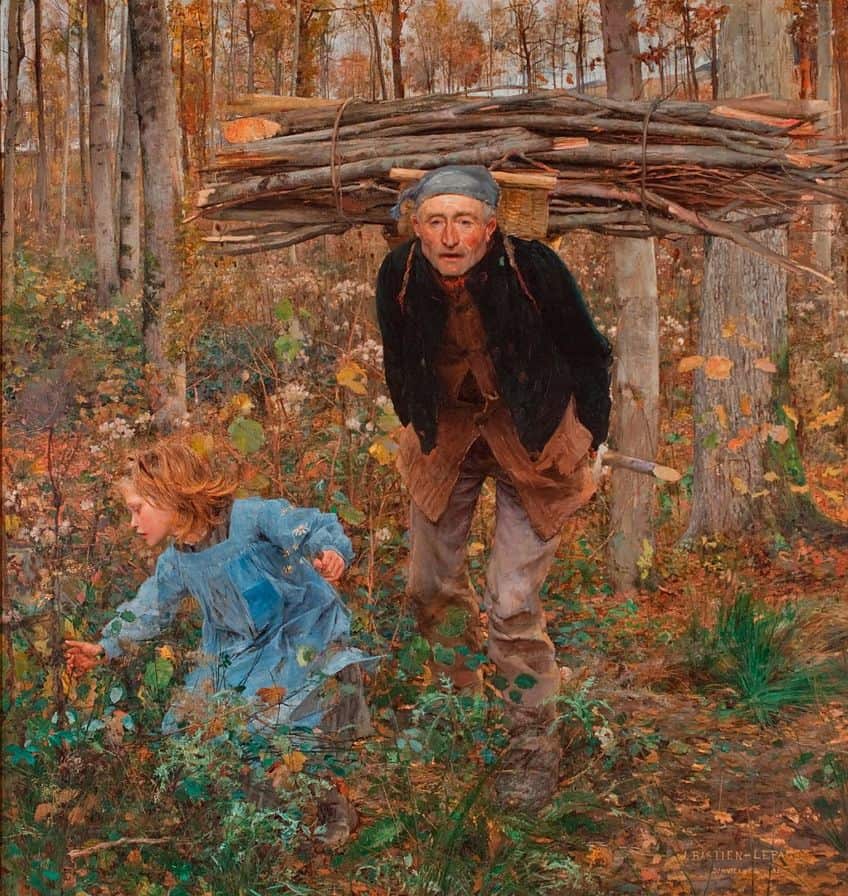
Rococo (1730 – 1770)
| Active Between | c. 1730 – 1770 |
| Famous Artists | ● Jean-Honoré Fragonard (1732 – 1806) ● François Boucher (1703 – 1770) ● Élisabeth Louise Vigée Le Brun (1755 – 1842) |
The rococo style was one of the most popular art styles of the 18th century, which was used across the fields of decorative arts, interior design, painting, and architecture. The style was characterized by its use of natural forms for ornamental decoration and originated from the French term rocaille, which was used for shell-covered rock art that was used to decorate artificial grottoes. Rococo art was also understood as the femme version of Baroque art and was most famous among the aristocrats of France. Theatricality was at the forefront of the rococo style, which introduced theater-inspired details in all corners of a room.
Muted colors and floral motifs were also prime features of rococo art, which quickly spread across Europe to encompass themes such as sensual love and the romanticization of living among nature.
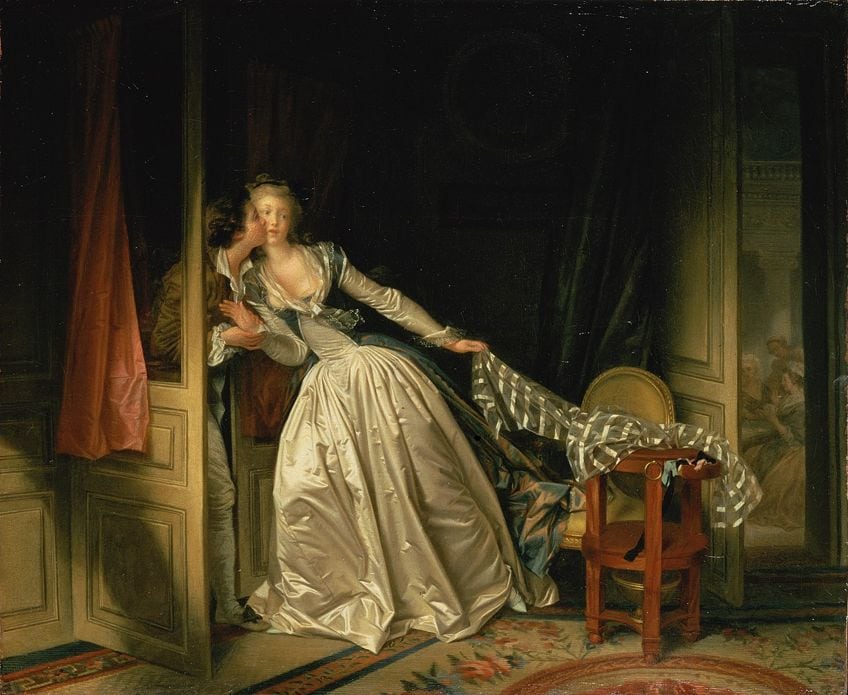
Romantic (1770 – 1900)
| Active Between | c. 1770 – 1900 |
| Famous Artists | ● Francisco José de Goya y Lucientes (1746 – 1828) ● William Blake (1757 – 1827) ● Caspar David Friedrich (1774 – 1840) |
The Romantic art style originated in the late-18th century and was known for its focus on individualism and all things inspired by the artist’s imagination. This included the supernatural, dramatic, and sometimes whimsical subjects of life that were overlooked by the Age of Enlightenment. The Romantic style was opposed to the traditions of Classicism and as such was characterized by the inclusion of expressive brush strokes and vivid colors to illustrate a passion or devotion to a subject. Sculptors also employed the romantic style to create detailed and realistic figures while sculpting artworks that conveyed themes of nature, emotion, and the supernatural. The main romantic element in such sculptures was a sense of dynamism and movement.
The romantic style significantly influenced Contemporary art through its focus on individualism, a passion for natural phenomena, mythology, and a rejection of Classical art.
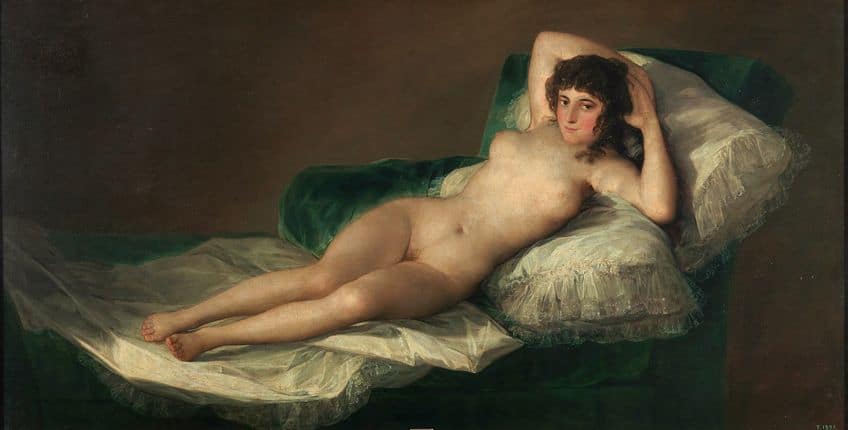
Realistic (c. 1850 – 1915)
| Active Between | c. 1850 – 1915 |
| Famous Artists | ● Jean Désiré Gustave Courbet (1819 – 1877) ● Columbano Bordalo Pinheiro (1857 – 1929) ● Jean-François Millet (1814 – 1875) |
Realistic art refers to a more developed version of naturalistic art that was most popular in the mid-19th century. While realistic art had its place in the Renaissance due to the ideals of humanism, realistic art aims to represent the world as it appeared objectively and avoided stylization.
Realistic styles do not shy away from depicting the gritty realities of life in an unidealized manner and can be realized in different mediums, especially journalistic photography.

Avant-Garde (1850 – Present)
| Active Between | c. 1850 – Present |
| Famous Artists | ● Natalia Sergeevna Goncharova (1881 – 1962) ● Olga Vladimirovna Rozanova (1886 – 1918) ● Alexander Porfyrovych Archipenko (1887 – 1964) |
The Avant-garde style is used to describe any approach to art-making that is considered innovative or new and is often affiliated with the 20th-century philosophy that art should be critiqued on its originality. The style is more so identifiable by the uniqueness of the work and should break the limits of ingenuity itself. Avant-Garde art tends to shy away from the normal production processes seen in academic settings and presents art that is radical in some way.
The Avant-Garde style thus promotes a new experience for viewers, such that the work cannot be found or experienced anywhere else.
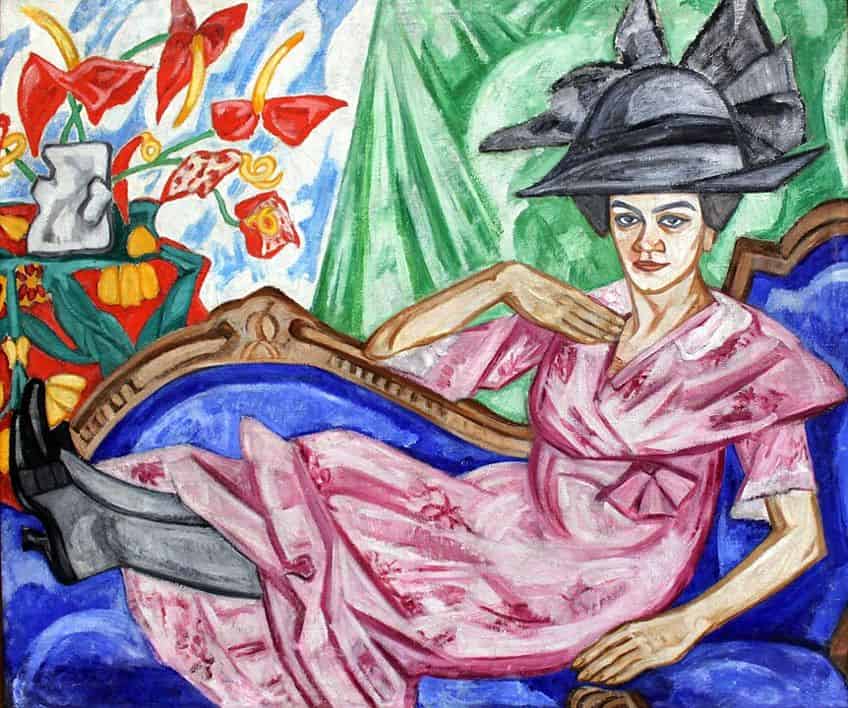
Impressionist (c. 1860 – 1890)
| Active Between | c. 1860s – 1890 |
| Famous Artists | ● Claude Monet (1840 – 1926) ● Pierre-Auguste Renoir (1841 – 1919) ● Alfred Sisley (1839 – 1899) |
The Impressionist art style emerged under the Impressionist movement, however, it too developed variations throughout the 19th century. The style of Impressionist art is defined by a stray from a realistic representation of color with loose brushwork and a focus on the effects of light on the subject. Subjects can range from portraits to natural landscapes and anywhere that light reaches. Impressionist styles often showcase variations of color and are seen as an impression of a subject that captures the mood as it appears to the artist.
Impressionist artworks often appear unfinished and are not concerned with realistic or traditional representation.

Pointillist (1884 – 1900)
| Active Between | c. 1884 – 1900 |
| Famous Artists | ● Georges Pierre Seurat (1859 – 1891) ● Paul Victor Jules Signac (1863 – 1935) ● Jerry Oliver Wilkerson (1942 – 2007) |
One might associate the Pointillist art style with figures such as Georges Seurat and Paul Signac who led the popularization of the Pointillist style. The style is defined by the use of small dots of color applied systematically to form a larger image. Pointillist paintings are made up of small fine dots arranged in different tones such that the painting carries a luminous and vibrant quality. The small dots also help guide the viewer’s eye to view the painting as one single image with immense detail and clarity.
The Pointillist style was among the most creative art styles of the late 19th century, which took over the art world for a small period and is still used in the 21st century as an alternative method to traditional academic techniques.
Pointillist artworks can be recognized by the presence of small dots of color applied uniformly. This may also cause the objects in the artwork to appear as though they are vibrating. Many painters have used the style to highlight the interesting dynamics between light, shadow, and color while painting landscapes, portraits, and still lives.

Art Nouveau (1890 – 1914)
| Active Between | c. 1890 – 1914 |
| Famous Artists | ● Alfons Maria Mucha (1860 – 1939) ● Gustav Klimt (1862 – 1918) ● Charles Rennie Mackintosh (1868 – 1928) |
The Art Nouveau style was founded under the late 19th-century art movement called Art Nouveau, which was an international art style that is well-known in the decorative arts. The style draws from many influences, including organic shapes, stained glass, and natural forms that reflect the widespread interest in the natural world and its place in design and architecture. The style was first introduced under an art gallery called the Maison de l’Art Nouveau, which promoted all things “new” and was opened under the supervision of Siegfried Bing, a famous Franco-German art dealer. Throughout Europe, the Art Nouveau style gained popularity and developed in many forms across Germany, Austria, and other parts of Europe. The style was also defined by the use of sinuous patterns, geometric shapes, and organic designs, which resulted in elaborately designed artworks, buildings, and furniture.
Popular colors included jewel and earth tones combined with a wide variety of materials.

Fauvist (1904 – 1910)
| Active Between | c. 1904 – 1910 |
| Famous Artists | ● Henri Émile Benoît Matisse (1869 – 1954) ● André Derain (1880 – 1954) ● Cornelis Theodorus Maria “Kees” van Dongen (1877 – 1968) |
The Fauvist style was developed under the Fauvist movement of the early 20th century and lasted for just over six years. The fauvist style prioritized a painterly approach to painting as well as unconventional color for representation. One can easily recognize a fauvist work by its use of acidic colors, gestural brushwork, and unusual juxtapositions. The main aim behind fauvist art was to establish color as an independent element from its traditional role as a tool for representation. The deliberate use of colors in a non-harmonious way was also seen throughout the Fauvist style along with unmixed colors that were taken directly from the tube. One of the major post-Impressionists, Paul Cézanne had a profound impact on the development of the style and movement.
Cézanne’s saturated approach and “wild colors” were used to express emotion, space, light, and mood.
Cubist (1907 – 1914)
| Active Between | c. 1907 – 1914 |
| Famous Artists | ● Georges Braque (1882 – 1963) ● Pablo Picasso (1881 – 1973) ● Robert Delaunay (1885 – 1941) |
The cubist art style originated in the 20th century and is defined by its rejection of representation and preference for geometric shapes and multiple angles of viewing. The Cubist style seeks to represent reality in an alternative manner and emerged under the art movement known as Cubism. Artworks often represent common subjects in fragmented forms and use a limited color palette with overlapping plans to visually disorientate the subject and challenge its viewer’s perception of form and space. The cubist art style is further defined by two sub-styles called analytical cubist and synthetic cubist works. The analytical cubist style is defined by the breakdown of a subject’s form into its basic geometric elements while focusing on the different perspectives from which it can be viewed. The synthetic cubist style focuses on the inclusion of material elements from media such as newspaper clippings to create a new visual form using the process of collage.
The cubist art style is therefore a broad style encompassing the analytical cubist and synthetic cubist art styles.
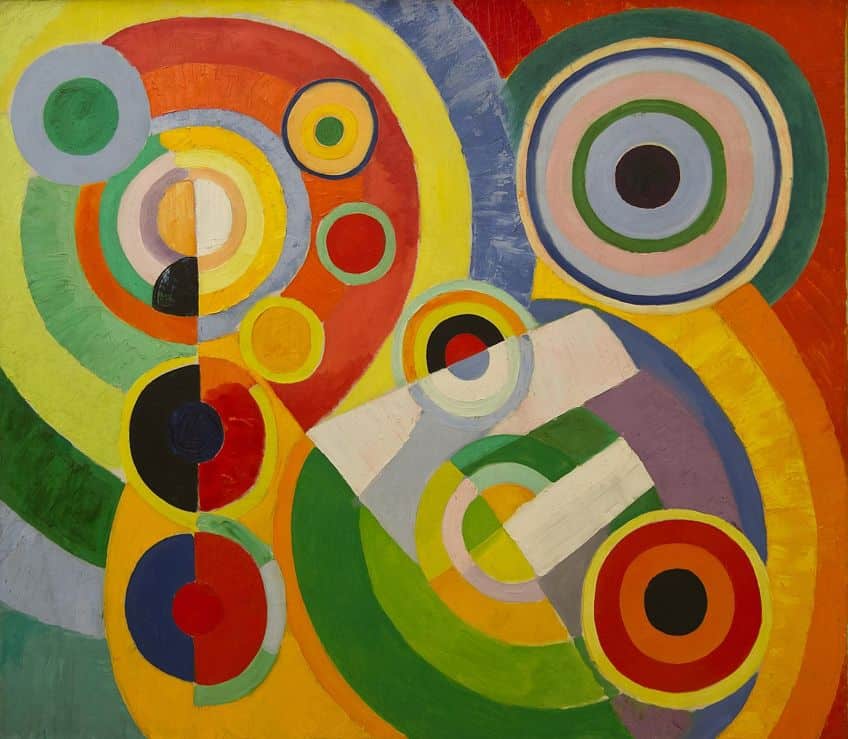
Art Deco (1910 – 1960)
| Active Between | c. 1910 and 1960 – Present |
| Famous Artists | ● Tamara Łempicka (1898 – 1980) ● Jean Dunand (1877 – 1942) ● Émile-Jacques Ruhlmann (1879 – 1933) |
The Art Deco style has significantly influenced the decorative arts well into the 21st century and had its roots in the early 20th century. The style emerged under the art movement known as Art Deco and is also identified as the French Arts Décoratifs. The style originated in France and then moved to the United States and the rest of Europe quite rapidly throughout the 1920s. Other art styles that influenced the Art Deco style included the art nouveau, cubist, and Bauhaus styles, which were fused with themes from nature, India, America, and Egyptian art. The style was also recognized as the Jazz Moderne style and was characterized by elongated and sleek figurative elements, modern materials, classical elements, and geometric forms.
Popular colors of the art deco style include greens, blues, yellows, pinks, and reds with materials such as glass, lacquered wood, steel, and other exotic materials.

Surrealist (1910 – 1966)
| Active Between | c. 1910 – 1966 |
| Famous Artists | ● Salvador Domingo Felipe Jacinto Dalí Domènech (1904 – 1989) ● Max Ernst (1891 – 1976) ● Yves Tanguy (1900 – 1955) |
The surrealist art style emerged under the Surrealism art movement between the 1920s and the 1930s when artists sought to discover the creative world of the subconscious mind. This art style closely followed the exploration of trauma after the first world war and was inspired by the heightened interest in psychoanalysis. The surrealist style is characterized by distortion, fantasy, and ideas of irrationality that are used to produce dream-like landscapes and artworks. These types of artworks usually express unusual compositions with images that the rational mind cannot fathom to be part of reality. Techniques and processes such as automatic drawing, collage, and photomontage are popular processes employed by Surrealist artists. Surrealist artworks also explore ideas promoted by Sigmund Freud and André Breton who were key figures in the development of theories surrounding the unconscious mind. Surrealist art styles proved to be incredibly influential on the development of Contemporary art since it focuses on the artist’s subjective experience of the inner self.
Surrealist works are also featured in film and literature and include major artists such as René Magritte and Salvador Dalí.
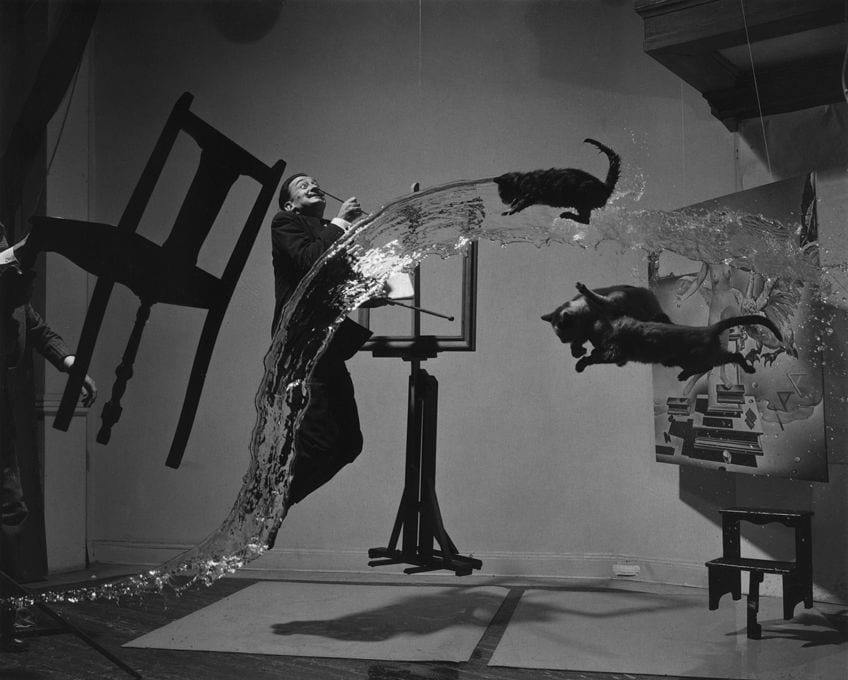
Suprematist (1913 – 1920)
| Active Between | c. 1913 – 1920 |
| Famous Artists | ● Kazimir Severinovich Malevich (1879 – 1935) ● Ilya Grigorevich Chashnik (1902 – 1929) ● Lyubov Sergeyevna Popova (1889 – 1924) |
Suprematist artwork emerged alongside the movement known as Suprematism, which began in the early 20th century and outlined the use of formal painting elements, simple geometric shapes, and bright colors to express a sense of purity and explore higher consciousness. The Russian art style rejected notions of representation and was recognized as a form of spiritual art that incorporated shapes such as lines, rectangles, squares, and circles against neutral backgrounds.
The exploration of simple painting elements and shapes influenced many Modern art styles and plays a crucial role in modern design.

Dadaist (1916 – 1924)
| Active Between | c. 1916 – 1924 |
| Famous Artists | ● Henri-Robert-Marcel Duchamp (1887 – 1868) ● Tristan Tzara (1896 – 1963) ● Hannah Höch (1889 – 1978) |
The Dadaist style is associated with the European Avant-Garde art movement that emerged around 1915 in Switzerland, called the Dada movement. The Dadaist style revolved around anti-bourgeois ideals, which were focused on the irrational and nonsensical elements of art that helped artists channel their creativity with more freedom.
The concept of the absurd is pivotal to the Dadaist style, which also uses humor, spontaneity, and irrationalism to evoke an emotional expression.

Neoplasticist (1917 – 1931)
| Active Between | c. 1917 – 1931 |
| Famous Artists | ● Piet Cornelis Mondrian (1872 – 1944) ● Theo van Doesberg (1883 – 1931) ● Bart van der Leck (1876 – 1958) |
The neoplasticist style is also identified with the Dutch art movement known as De Stijl and the early 20th-century movement known as Neoplasticism. Neoplasticism was a reaction to the turmoil of World War I and emphasized the use of primary colors and geometric forms over abstract art. The style was created to represent the shift to a modern world characterized visually by vertical and horizontal lines, monochrome colors, and primary colors. The simplification of shape was also important and emphasized the use of rectangles and squares in art. The reality was thus reduced to its bare elements to represent the structure of modernity, intended to become timeless and universal. Key artists associated with the style include figures such as Gerrit Rietveld, Piet Mondrian, and Theo van Doesburg.
Neoplasticism artists are admired for their use of precision and clarity in their work and had a profound influence on Contemporary architecture, industrial design, and graphic design. The neoplasticist style is considered a precursor to the minimalist style.

Abstract Expressionist (1943 – 1950)
| Active Between | c. 1943 – 1950 |
| Famous Artists | ● Helen Frankenthaler (1928 – 2011) ● Paul Jackson Pollock (1912 – 1956) ● Willem de Kooning (1904 – 1997) |
Abstract Expressionist styles can be defined by the two types of processes in Abstract Expressionism that prioritized the subconscious expression of emotion through color. This art style is a modern art style that originated in the mid-20th century and involves spontaneous visual languages created using action painting or color field painting to express an artist’s emotions or convey a particular mood.
This art style can be found in artworks that reject not only traditional aesthetics but also traditional ways of making art.
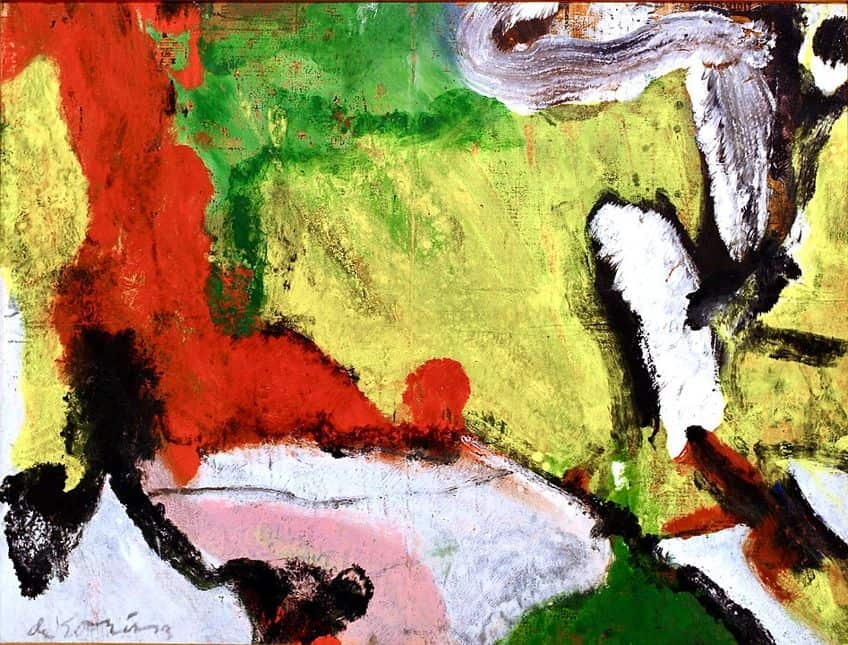
Minimalist (1950 – Present)
| Active Between | c. 1950 – Present |
| Famous Artists | ● Donald Clarence Judd (1928 – 1994) ● Sol LeWitt (1928 – 2007) ● Agnes Bernice Martin (1912 – 2004) |
The minimalist style was derived from the Modern era in the mid-1960s when simplicity in form was prioritized as opposed to chaotic and experimental work. The Minimalism movement focused on the minimalist art style that admired the simplicity of the elements of art and was characterized by a preference for simple shapes, a limited color palette, and a lack of ornate detail. Most minimalistic works are often monochrome and lack representation. The minimalist style was a move away from expressionistic works and is often viewed as impersonal artworks that feature clean lines and a focus on the artwork’s physical presence and its occupation of space. Minimalist artworks can be produced from a wide range of materials, including industrial materials.
The minimalist approach has been widely adopted since the 1960s and can be found in almost any medium.
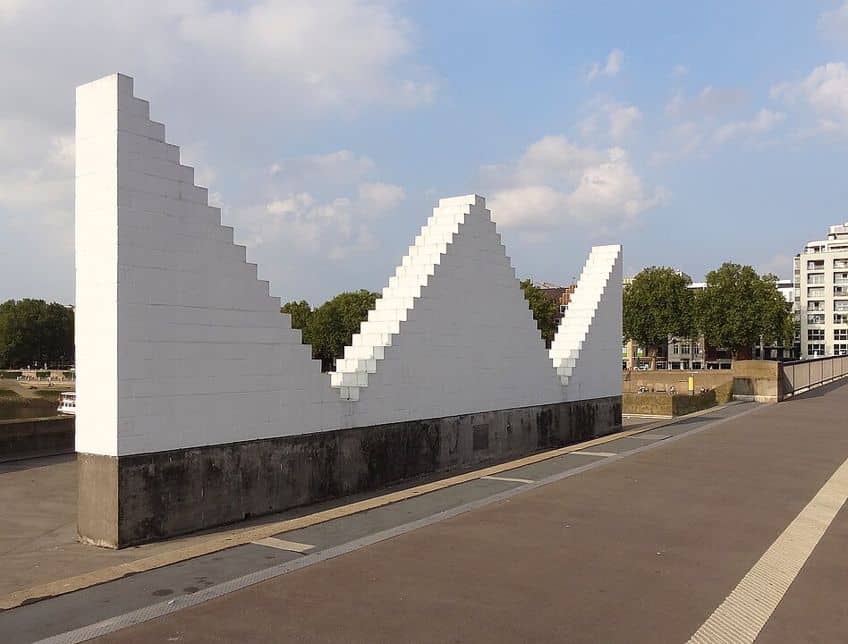
Op Art (1960 – 1970)
| Active Between | c. 1960 – 1970 |
| Famous Artists | ● Bridget Louise Riley (1931 – Present) ● Jesus Rafael Soto (1923 – 2005) ● Victor Vasarely (1906 – 1997) |
Optical art is also called “Op art” and is an art style that was most popular in the 1960s. This art style focuses on the art of illusion to make artworks and images appear as though they are either moving or three-dimensional forms. This style is characterized by the use of geometric shapes, perspective techniques, and high-contrast colors to create simple and elaborate illusions that appear to vibrate as the viewer’s eye moves through the artwork. Op art also features elements such as moiré patterns, after-images, and color distortion techniques that engage with the notion of the perception of movement, depth, and space. The style was heavily influenced by theories around visual cognition and perception as found in science and mathematics and was an artistic reaction against visual languages adopted under Minimalism and Abstract Expressionism.
Today, Op art styles can be found in the realm of digital art and graphic design where many Contemporary artists use optical illusions to create new visual effects and champion new ways of using digital media. Op art styles can also be seen in fashion and advertising through design.

Photorealistic (1960 – Present)
| Active Between | c. 1960s – Present |
| Famous Artists | ● Richard Estes (1932 – Present) ● Charles Thomas Close (1940 – 2021) ● Audrey L. Flack (1931 – Present) |
The Photorealistic art style gained popularity in the last quarter of the 20th century in response to Abstract Expressionism. Photorealistic artworks are defined by the resolution or clarity of the subject rendered in a way that convinces the viewer that the image resembles a photograph or snapshot of a moment. The photo-realistic style also incorporates techniques that involve the use of high-resolution photography, meticulous brushwork in painting, and airbrushing to produce an image that is as realistic as possible.
Popular artists of the 1960s who created photorealistic artworks include figures such as Chuck Close and Richard Estes. Over the next decade.
The photo-realistic art style gained significant popularity and saw the emergence of other popular Photorealists, including Don Eddy, Ralph Goings, and John Bader. The characteristics of photorealistic artwork include the use of high contrasts, meticulous attention to detail, a neutral color palette, and an emphasis on concise, sharp lines. Photorealistic artworks often portray mundane, everyday subjects, such as cityscapes, cars, shops, and other common scenes that are created with a high degree of precision. Photorealism is the genre under which photo-realistic artwork evolved and has seeped into the Contemporary art stream via 3D modeling and digital camera artwork that are used to produce highly realistic images. Realistic artworks tend to critique the influence of mass consumerism and popular culture but have also been criticized for their emphasis on an artist’s technical ability as opposed to its conceptual foundation.
Painterly (20th Century – Present)
| Active Between | c. 20th century – Present |
| Famous Artists | ● Vincent Willem van Gogh (1853 – 1890) ● Joseph Mallord William Turner (1775 – 1851) ● Richard Schmid (1934 – 2021) |
To define a painterly art style, one can immediately draw their attention to the medium as opposed to the end visual product. In this art style, the focus of the artist is on the paint quality and the texture of the paint. This is highlighted by the presence of visible and loose brush strokes as well as an emphasis on texture, color, and artistic spontaneity. Painterly artworks move away from achieving a perfect representation of the subject and instead aim for fluidity and areas in the composition that can highlight the thickness of the paint.
In painting, these types of artworks appear sculptural and contain an element of three-dimensionality, a lack of precise lines, and a sense of movement in the composition.
Painterly artworks are often inspired by the process of painting and draw attention to the artist’s handling of the medium and awareness of its physicality. The style first originated strongly in the late 19th century in opposition to academic painting styles and can be seen in works by post-Impressionists Paul Cézanne and Vincent van Gogh. Painterly artworks have also been juxtaposed with linear styles for added expression and graphic quality.
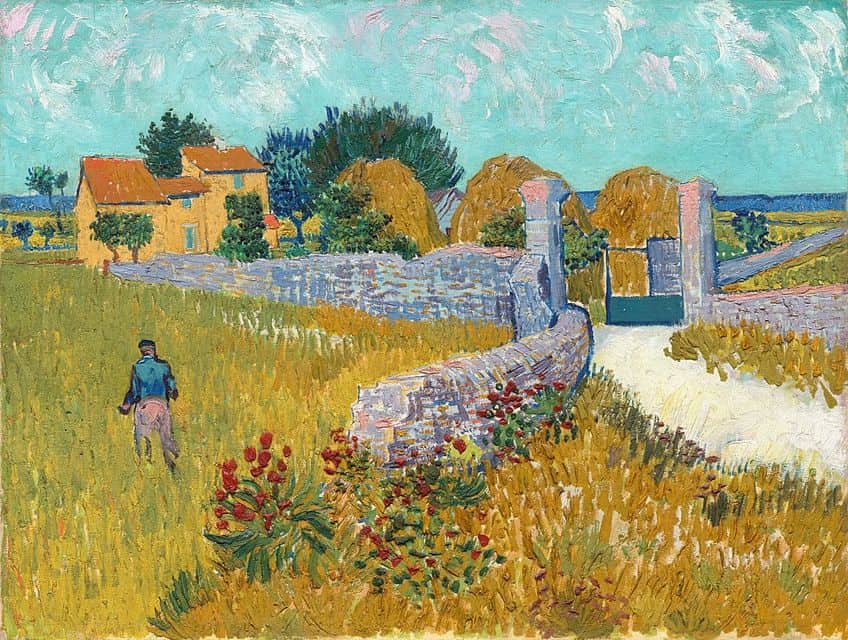
Contemporary (c. late -20th Century – Present)
| Active Between | c. late 20th century – Present |
| Famous Artists | ● Yayoi Kusama (1929 – Present) ● Damien Steven Hirst (1965 – Present) ● Jeffrey Lynn Koons (1955 – Present) |
The contemporary art style is one of the better-known art styles of the 21st century that is still undergoing much development. Art categorized as “Contemporary” was founded between the 1980s and the present era, which encompasses subjects of the current period that are produced by living artists. These artworks are ever-changing and evolving and what was once contemporary can become “post-contemporary” and develop based on trends in art styles in the future. Contemporary art styles are inspired by current events, abstract occurrences, and experimental processes, and are often presented in ways that challenge pre-existing notions of art.

These different art styles have significantly influenced the way we view and interpret art through the lens of the art movements that shaped them. Distinguishing between an art style and an art movement is important since it not only helps hone your ability to distinguish between different visual languages, but also helps you to foster your creativity for developing new art styles.
Frequently Asked Questions
What Is an Art Style?
An art style is defined by the recognizable set of visual characteristics that encompass a particular approach to making art and are understood in their varying categories. An art style is characterized by the way the artists express their vision, and can focus on a variety or combination of elements such as composition, color, representation, subject, and form.
What Makes an Art Style Different from an Art Movement?
An art style is different from an art movement in many ways. Art styles are specific visual characteristics of an artwork that are innovated by an individual artist, and have the power to influence other artists. The philosophy that emerges from a collective group of artists on how to approach art production or a new artistic style is categorized as an art movement and occurs over longer durations. Art styles can be developed under art movements; however, multiple variations can emerge and influence the development of new movements.
What Are the Most Famous Art Styles?
The most popular art styles in art history include the Impressionist, Modernist, Abstract Expressionist, Surrealist, Expressionist, and Cubist art styles.
Liam Davis is an experienced art historian with demonstrated experience in the industry. After graduating from the Academy of Art History with a bachelor’s degree, Liam worked for many years as a copywriter for various art magazines and online art galleries. He also worked as an art curator for an art gallery in Illinois before working now as editor-in-chief for artfilemagazine.com. Liam’s passion is, aside from sculptures from the Roman and Greek periods, cave paintings, and neolithic art.
Learn more about Liam Davis and about us.
Cite this Article
Liam, Davis, “Art Styles – Tracing the Progression Throughout History.” artfilemagazine – Your Online Art Source. October 2, 2023. URL: https://artfilemagazine.com/art-styles/
Davis, L. (2023, 2 October). Art Styles – Tracing the Progression Throughout History. artfilemagazine – Your Online Art Source. https://artfilemagazine.com/art-styles/
Davis, Liam. “Art Styles – Tracing the Progression Throughout History.” artfilemagazine – Your Online Art Source, October 2, 2023. https://artfilemagazine.com/art-styles/.


